AH Q IS NOT OKAY – A Solo Exhibition by Chan Ho Wang
2023.01.14 – 2023.02.19
Opening Hours:
Tuesday to Sunday, 11:00am-1:00pm, 2:00pm-6:00pm, Closed on Mondays (except Public Holiday)
Opening Reception:
2023.01.14, Saturday, 4:30pm
Lumenvisum | L2-02, Jockey Club Creative Arts Centre, 30 Pak Tin Street, Shek Kip Mei, Kowloon
Artist Sharing:
2023.2.19, Sunday, 2:30pm
Lumenvisum | L2-02, Jockey Club Creative Arts Centre, 30 Pak Tin Street, Shek Kip Mei, Kowloon
Artist Talk: https://www.eventbrite.hk/e/502451625337
Visitors registration: https://www.eventbrite.hk/e/502464684397
About the artist
Chan Ho Wang is a full-time designer, he makes art after work and during the weekends. His work revolves around social trauma and social norms. He believes in the power of photography, and this has become the point of departure for his practice. Chan mainly uses images and moving images to present his ideas. Some past exhibitions include Noble Rot Part 1 (Para Site, 2021), HKFOREWORD 21 (10 Chancery Lane Gallery, 2021), ‘What’s Next?’ A JOINT EXHIBITION OF YOUNG ARTISTS (Lumenvisum, 2021)
A Discourse on Labour
In the satirical novella The True Story of Ah Q, Lu Xun criticises Ah Q’s “spiritual victory” as a method of self-comforting. However, to artist Chan Ho Wang, Ah Q is not merely a pathetic, laughable character, but a tragic figure who attempts to fight against harsh society with “spiritual anaesthesia”. The title of this exhibition references Ah Q’s story, while Chan offers a playful yet serious tune to rethink Ah Q’s helplessness. He sheds light on the relationship between emotional labour and exploitation, reimagining how Ah Q faces mental oppression amid our contemporary society, attempting to subvert our linear imagination of “spiritual victory”.
Invisible, unaccounted, and undervalued labour and contribution (largely performed by women) are ubiquitous, spanning the domestic space and the work field. The imbalance between contribution and reward/value, as well as the rampant exploitation within and beyond the institution have become the driving forces that keep the capitalist society afloat. Self-exploitation eventually saps the will and spirit, while emotional labour is the most marginalised existence. When we mock every Ah Q trying to laugh it off and make sense of the oppression that they face, we seem to ignore the systemic collapse and exploitation behind, putting the blame on people who are unable to take full control of their lives.
The artist shapes the exhibition space into a chaotic and restless mental prison—the works on one hand dig deep into one’s inner world, on the other hand, this intra-exploration intertwines closely with the world outside, revealing the complexity of our society. This exhibition features mainly videos and image-based works. At the same time, Chan also makes use of found objects of everyday life, exploring the subtle connection between the symbol of an object and the notion of labour. Normal Operation highlights futile, repetitive, and mechanised labour. Murmurs of The Machines presents imagery and texts printed on thermal paper, capturing an anxious feeling that arose from mental exploitation. He hopes to shed light on the marginalised labour of his family members through this meticulous and repetitive act. Self-photographed work Bu Yao Qi Lai (Do Not Arise) shows a halfly hung canvas banner that pushes the idea of propaganda to an extreme, using a satirical way to “advocate” self-exploitation. Under Maintenance goes back to Lu Xun’s novella, reimagining Ah Q as a woke figure. Mixed media installation work I Wish To Be Seen embodies a group of adjacent inflatable balloons, sluggishly seething outwards. A repetitive footage of the artist himself is projected over the set-up, form-fitting to the balloons to present a stranded scene. The imagery of practising a series of equivalent actions towards the camera is a presumption to Ah Q’s worn-out, and the product of marginalisation due to the constant take place of emotional outburst.
Chan Ho Wang’s artistic practice focuses on image making. The “gaze” of documentary photography has always deeply influenced his practice. Chan’s works revolve around social trauma, power relations, institutions, and surveillance. Chan comes from a grassroots background, he began exploring street photography at the age of eighteen, and ponders the role of the observer as a photographer, gaining insight into suffering and social injustice through photography, and transforming images into a channel of expression. In the past, Chan has created works from a more detached point of view. In this exhibition, Chan hopes to make a new attempt by responding to the plight of small people in society and the complexity of emotional labour and exploitation in a more intimate way.
Text, editing, and translation: Hou Lam Tsui, Ip Hin Ching aka Jay
